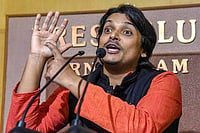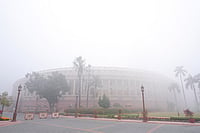
While global interest rates do guide monetary policy actions in India, a robust domestic demand scenario cannot be ignored either. Retail banking forecasts for 2006 are increases of 30 per cent for home loans and 20 per cent for car loans. Some premier private banks understandably have exposure to home loans of about 65 per cent of their credit portfolio—and that can cause some alarm. "If you don't want to end up with damaged bank balance-sheets, then prudential action is probably a slight interest rate increase," says an economist.
Goldman Sachs Group economists told clients in December 2005 that "we envisage Asia to continue to lag the Fed rate cycle by carrying on tightening into the second half of 2006", resulting in a weak dollar and stronger Asian currencies. Morgan Stanley's Chetan Ahya predicts a 100 basis point rise in India's short-term policy rate in 2006, while Rajeev Malik of JP Morgan Chase believes there could be a couple of more hikes, with one hike definitely in July. Sanjeev Sanyal, director, Global Markets Research, Deutsche Bank, expects the Fed rate to end at 5 per cent and more "natural" tightening in India with one more moderate rate hike.
Going forward, the RBI will clearly be guided by data flow, liquidity and price situation. The Budget will be a major guide as, says Joshi, "inflation can be better tackled by fiscal measures". Sanyal feels that the global tightening has been driven more by underlying pressures due to strong growth on the one hand and asset quality and prices on the other than by high-headline inflation. "This is a big dilemma (for central banks) because monetary policy frameworks of today are designed to fight inflation in prices rather than asset values," he says.
Could the RBI be worrying too much? A CRISIL analysis indicates that the likelihood of a widespread slump in property prices is small in India. "The impact of such a slump, if any, on mortgage portfolios will be manageable," according to K. Sitaraman, head, financial sector ratings, CRISIL. Adds Roy: "What is most important at a time when investments have just started picking up is to keep interest rates benign." Will the central bank keep such views in mind while "fighting to stabilise" the rupee?






















